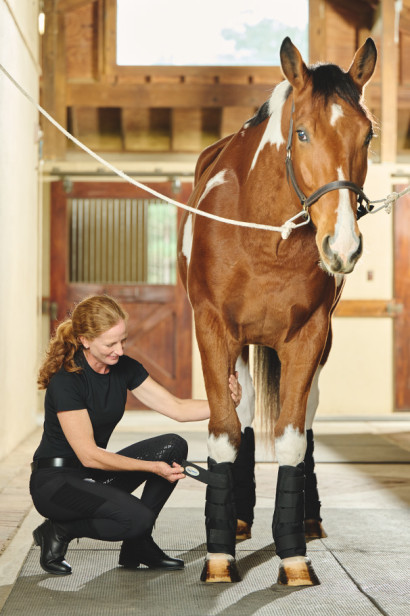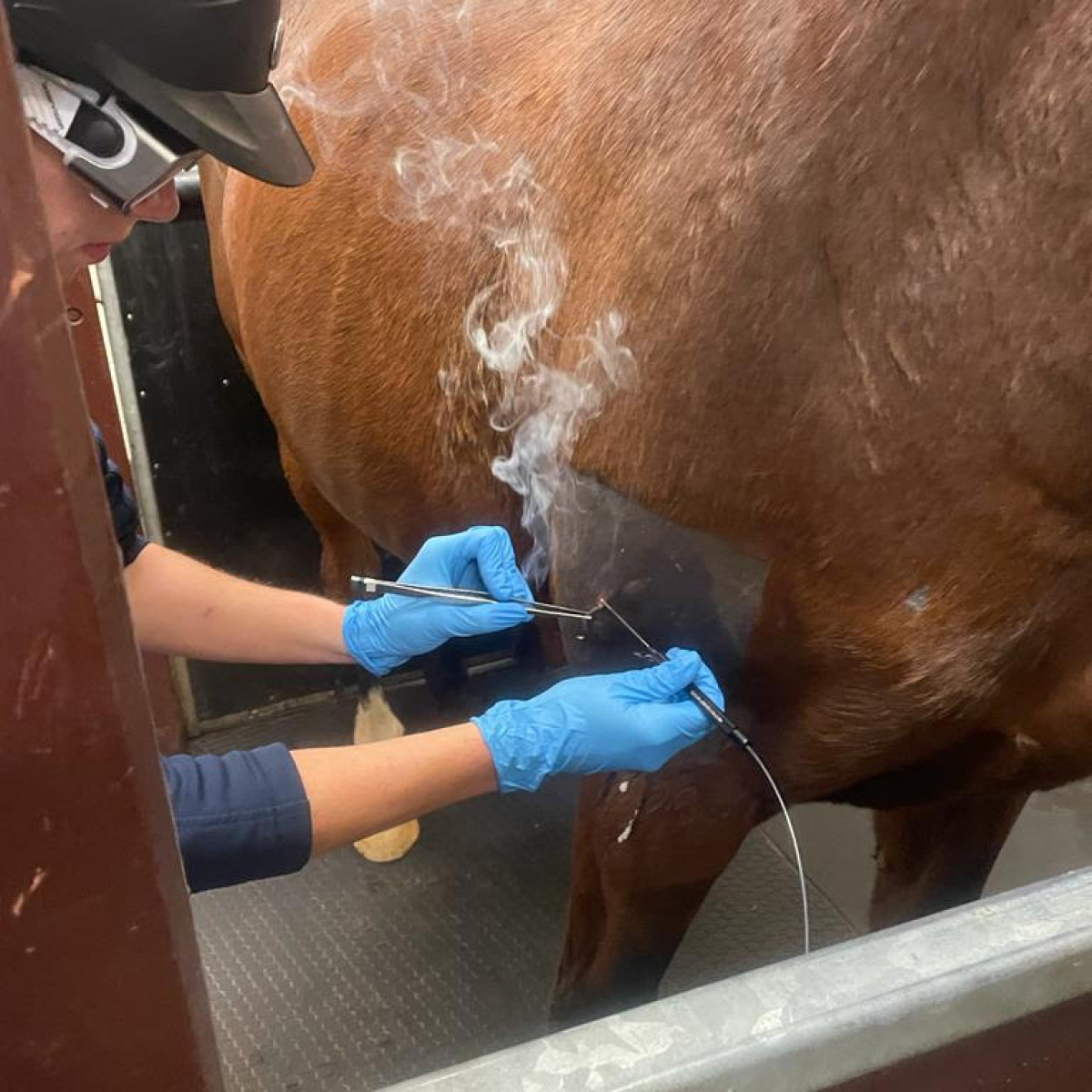Discovering the Holistic Approach of Equine Therapy for Personal Development
Discovering the Holistic Approach of Equine Therapy for Personal Development
Blog Article
Exactly How Laser Therapy in Equine Treatment Is Changing Vet Look After Equines
Laser therapy has emerged as a transformative strategy in equine vet care, offering a non-invasive service that expedites recovery and boosts general health and wellness. Leveraging accurate light wavelengths, this cutting-edge therapy promotes cellular regrowth, decreases inflammation, and minimizes discomfort. Its effectiveness extends from musculoskeletal injuries to persistent conditions like osteoarthritis, significantly boosting wheelchair and life high quality for steeds. The mobility and adaptability of laser treatment devices further emphasize their growing indispensability amongst veterinarians. As we explore the detailed auto mechanics and real-world successes, the profound impact on equine clinical methods ends up being significantly apparent.
Comprehending Laser Treatment

The innovation behind laser treatment is grounded in the principle of photochemistry, where photons are soaked up by chromophores within cells, leading to enhanced ATP manufacturing and inflection of reactive oxygen types (Equine Therapy). This, subsequently, advertises cellular proliferation, minimizes swelling, and accelerates healing. Vet practitioners use various types of lasers, consisting of low-level lasers (LLLT) and high-power Course IV lasers, depending on the particular healing purposes and the nature of the equine condition being treated
Different laser wavelengths and power settings are very carefully picked to target numerous cells midsts and achieve desired clinical results. Safety and security methods are paramount, as improper usage can result in thermal damage or suboptimal restorative impacts. Therefore, a thorough understanding of laser treatment's systems and applications is essential for its effective implementation in equine veterinary technique.
Advantages for Horse Health And Wellness
The myriad advantages of laser treatment for equine health incorporate improved healing, discomfort decrease, and improved mobility. This innovative treatment technique leverages certain wavelengths of light to penetrate cells, promoting mobile function and promoting quick tissue repair work. The non-invasive nature of laser treatment makes certain very little tension and pain for the equine, facilitating a smoother healing procedure.
Improved recovery is one of the leading advantages, as laser therapy speeds up mobile regrowth and collagen synthesis. Pain reduction is accomplished via the anti-inflammatory effects of laser therapy, which reduces swelling and minimizes the manufacturing of pain-inducing chemicals.
Better mobility is another essential benefit, specifically for efficiency and functioning steeds. By reducing inflammation and discomfort, and boosting cells repair, laser therapy helps in restoring joint function and muscle flexibility. The cumulative effect of these advantages is not just a quicker go back to regular task however likewise a general enhancement in the equine's high quality of life. Thus, laser therapy stands as a transformative device in modern-day horse vet care.
Usual Conditions Treated
Laser therapy has actually emerged as a functional treatment option for a range of common equine problems. Additionally, laser treatment is efficient for problems like osteoarthritis, where it aids alleviate joint inflammation and advertise tissue fixing.
Wound monitoring is another location where laser therapy has actually shown considerable promise. Persistent wounds or slow-healing abscess can be especially tough in equines, but laser treatment enhances cellular regrowth and enhances blood flow, thus quickening the healing procedure. Laser treatments have been efficiently used in managing unguis conditions such as laminitis and abscesses, minimizing discomfort and promoting much faster recuperation.

Modern Technology Behind Laser Therapy
Past the myriad problems he said treatable with laser treatment, the technology itself values better examination. At the heart of laser treatment is using details wavelengths of light to permeate cells and elicit organic actions. These wavelengths, usually ranging from 600 to 1000 nanometers, are precisely taken in by chromophores in the skin, muscle mass, and other cells, prompting a waterfall of cellular events.
Laser tools utilized in veterinary medicine often make use of low-level laser treatment (LLLT) or chilly laser therapy. Unlike high-powered medical lasers, these gadgets operate at reduced power levels, optimizing healing advantages while lessening thermal damage. The power from the laser light promotes adenosine triphosphate (ATP) production, enhances mobile metabolic rate, and increases cells fixing processes.

Success Stories and Study

Showcasing the tangible benefits of laser therapy, countless success tales and study brighten its transformative influence on equine health. One such situation includes a pureblood racehorse struggling with persistent tendonitis. Conventional treatments generated next page very little renovation, yet after integrating laser therapy into the routine, the horse displayed considerable reductions in swelling and pain within weeks, ultimately returning to competitive racing.
Another compelling instance includes a dressage steed identified with serious neck and back pain, limiting its performance. A vet group utilized low-level laser therapy (LLLT) to target the inflamed locations, causing significant enhancement in versatility and a significant reduction in discomfort. Over numerous sessions, the steed restored its peak type, showcasing the efficacy of laser treatment in resolving bone and joint problems.
Additionally, a research carried out at a leading equine center analyzed 50 horses with numerous soft tissue injuries treated with laser therapy. The outcomes stood out: 85% of the equines demonstrated accelerated recovery times and enhanced flexibility. These situations highlight the adaptability and efficiency of laser therapy in equine medication, providing a non-invasive, scientifically-backed approach to enhancing recuperation and performance in horses.
Verdict
Laser therapy is revolutionizing equine vet care by providing a non-invasive treatment that accelerates healing, minimizes inflammation, and eases pain. With its effectiveness in dealing with a variety of conditions, from musculoskeletal injuries to persistent disorders like osteo arthritis, this innovation dramatically improves equine health and flexibility. The transportability and flexibility of laser treatment further underscore its transformative influence on veterinary methods, solidifying its duty as a crucial tool in modern-day equine health care.
Report this page